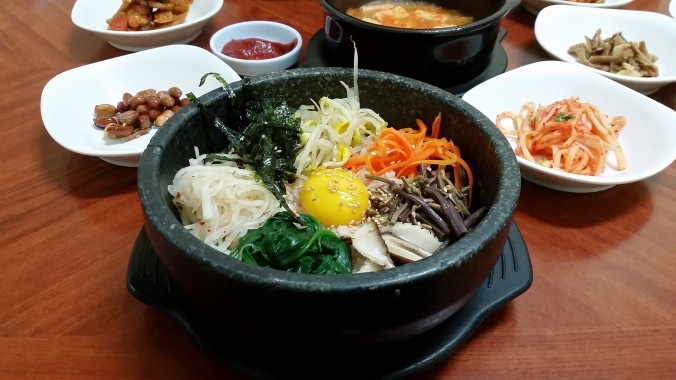Another threshold was crossed in the consumption of this meal. I had psyched myself up for this days in advanced. Even as I walked to the restaurant, I knew what I was doing and at that stage I was okay with it. I sat down with an air of fake confidence and ordered the dish. The lovely Korean lady that served me checked my order a couple of times with a surprised look on her face. I affirmed.
After she hurried off to make the dish I sat there and the full weight of what was about to transpire got me. And it got me good. My appetite vanished. My stomach turned into a knot. My pulse quickened. I searched the room longingly for an easy exit; they’ve run out of stock, I’m feeling sick, a big group needs my table. But alas nothing gave me respite from my situation.
I distracted myself with the B-grade 80’s action flick Broken Arrow on the TV nearby, and whoever the main actor is. I’ve seen him so many times but for the life of me I couldn’t remember where or in what films, let alone his name.
Then it arrived.
I’ve heard the smell is strong and off putting, but not to me, I didn’t notice it.
I wasn’t hungry but I begrudgingly started my meal as I had come too far to chicken out. I slowly ate the boiling hot slightly spicey soup.
Over the next hour I slowly ate most of the meal and a few sides, plus another soup offered as ‘service’. Pausing every now and again to remember exactly what I was eating and why I would do such a horrible thing. Also to watch some more Broken Arrow – John Travolta was the bad guy.
It wasn’t bad at all, I’ll even say it was tasty. The meat was akin to beef except much more tender and succulent. The color and taste I found very similar to beef and it only looked marginally different. You could easily be tricked into eating this thinking it’s beef, but it’s not.
Once I felt like I had laboured enough as to not offend my hosts I slowly stood up and left.
Maybe it was the combination of too much soup, not being hungry, too many 80’s cliches and my mind working overtime but I felt queasy on the walk home. However that quickly subsided and so did the mental pang of what I had done.
Maybe you will hate what I have done (again) but I sleep just fine at night. I can justify it in every same way I did when I ate whale meat refer to that post if you have questions. This practice also has a long history dating back to as early as 400 AD – research it yourself. Right or wrong, good or bad, who is to say?
I don’t think I will eat it again unless I have to. Once is enough, I can now say I’ve eaten dog meat.
Bosintang 8/10 – no jokes here





















